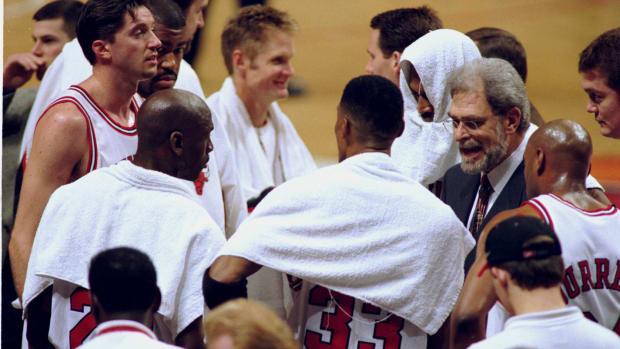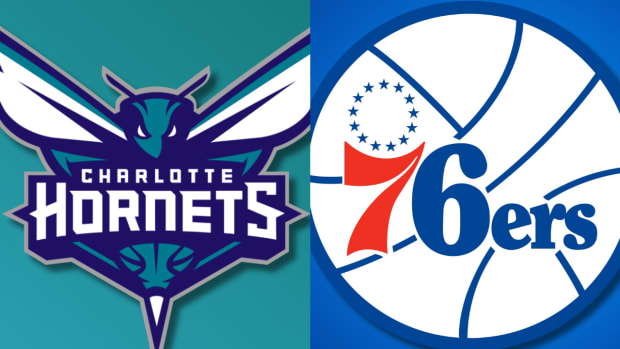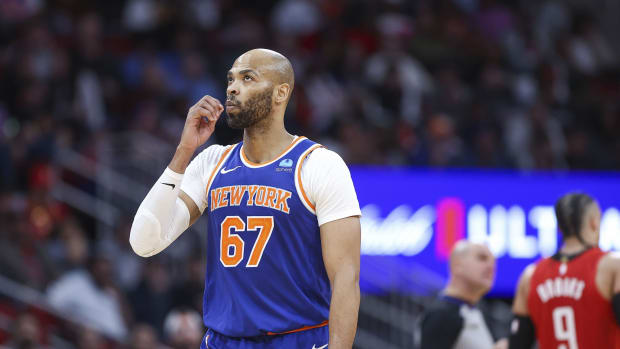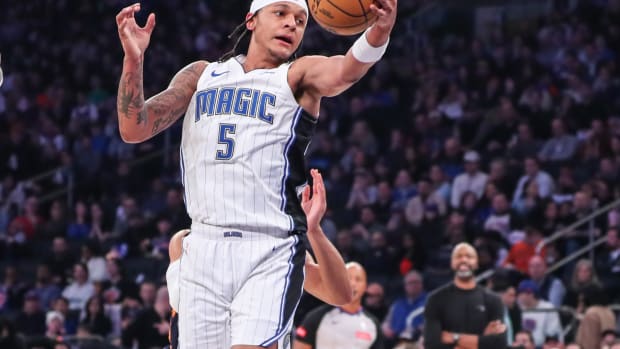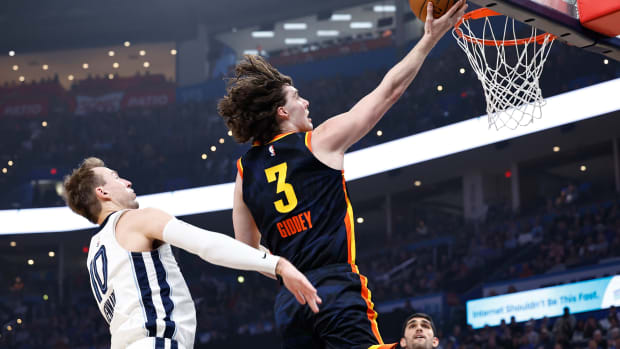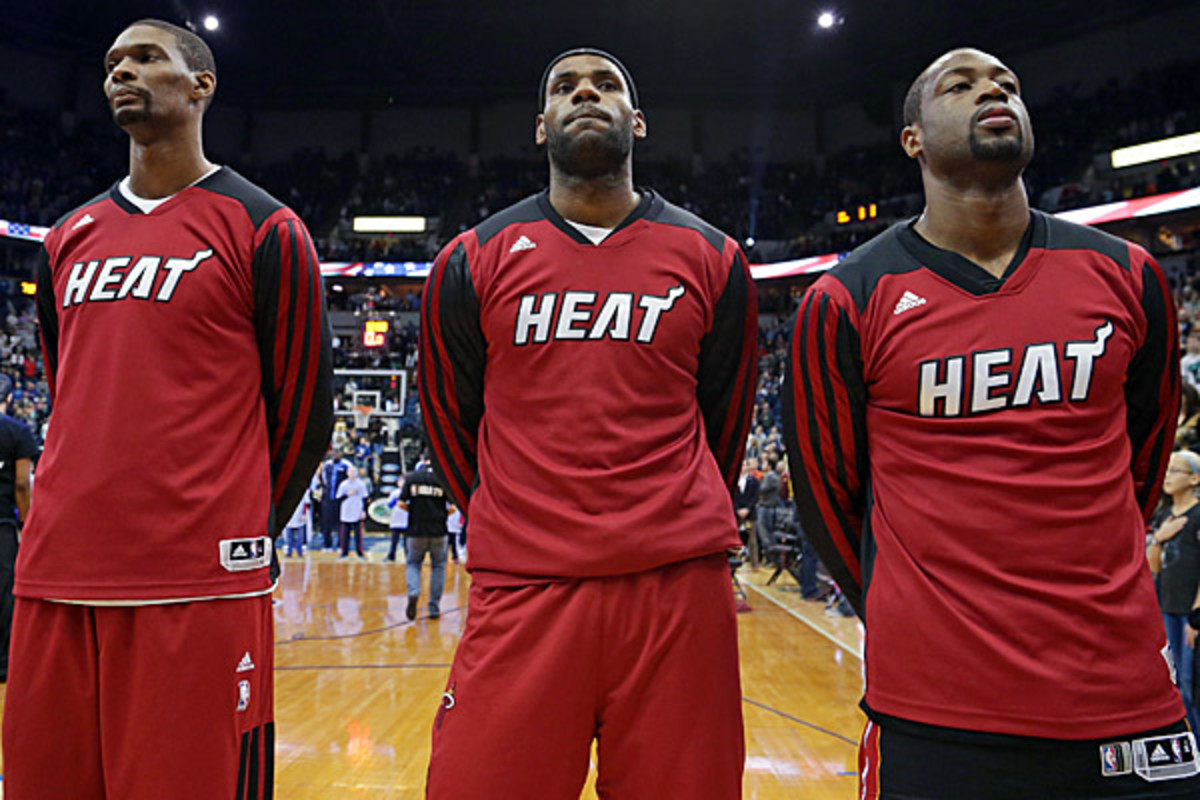
Offseason outlook: Miami Heat
The Heat's offseason again centers on (from left) Chris Bosh, LeBron James and Dwyane Wade. (Jordan Johnson/NBAE via Getty Images)
Here’s a look at what’s in store for the Heat this offseason after their five-game loss to the Spurs in the NBA Finals.
Free agents: LeBron James (ETO), Dwyane Wade (ETO), Chris Bosh (ETO), Ray Allen (UFA), Shane Battier (UFA), Mario Chalmers (UFA), Chris Andersen (PO), Rashard Lewis (UFA), Udonis Haslem (PO), Toney Douglas (UFA), Michael Beasley (UFA), Greg Oden (UFA), Justin Hamilton (nonguaranteed)
Early termination option (ETO) -- Allows a player to terminate his contract early.
Player option (PO) -- Allows a player to accept or decline the final year of his deal.
Team option (TO) -- Allows a team to accept or decline an option year.
Unrestricted free agent (UFA) -- Allowed to sign with the team of his choosing.
Restricted free agent (RFA) -- Subject to the right of first refusal from incumbent team.
Cap situation: Entirely fluid
Draft picks: No. 26, No. 55
• What's the biggest priority for Miami this offseason?
Securing its core in a way that allows for roster development. With James, Wade and Bosh all having ETOs, the Heat are in a position of both flexibility and vulnerability. The latter is fairly straightforward: If any of those All-Stars opts out and hits free agency, Miami would have to compete for their services. The former, on the other hand, leaves the Heat's future wide open through the same mechanism. All three could opt out with the intent to return on long-term contracts, carving out room to make a big roster addition.
LeBron: 'We'll take 50 percent' in four trips to Finals
If James, Wade and Bosh can be sold on the franchise's future (as seems reasonable given the opportunity, the caliber of coaching/management and the inherent draws of Miami), the discussion moves to the contracts each would accept. If they decline their ETOs to remain with the Heat, the trio would be set to make more than $20 million apiece next season. The first-year salary of a new deal, by comparison, could be as low as they're willing to take, with every dollar conceded going toward another potential roster move.
• How can the Heat improve this offseason? Through free agency? The draft? Trade?
Free agency almost exclusively. This is the first opportunity for this version of the Heat to change its salary structure significantly. The die was cast in 2010; since then, Miami has never had more than the $3 million taxpayer mid-level exception at its disposal. Those smaller exceptions netted Battier and Allen in consecutive summers, but now the Heat can wade deeper into the free-agent pool to potentially land an even greater asset. The timing couldn't be better, as Miami's championship-or-bust team-building style has left its roster without much forward momentum. Of the Heat's top nine in minutes this season, only one (25-year-old backup point guard Norris Cole) was younger than 27 and five were 32 or older. There is no Kawhi Leonard to illuminate what might lie ahead. Instead, this is a roster of veterans who will go as far as LeBron takes them.
MAHONEY: Offseason outlook for Spurs
This summer, Miami can better leverage its standing as one of the most intriguing free-agent destinations. James is an incredible selling point, as is the potential to dominate the weaker of the two conferences -- a competitive advantage that cannot be oversold. The Heat may have lost the Finals in five games, but this is still the best team in the East by a decisive margin, even though Miami finished behind the Pacers in the regular season. That status matters, particularly if it can be used to entice the kind of talent that would help Miami address its flaws. Athleticism, curiously enough, is lacking. A rim protector would be nice, though Miami could make do with a few role players who can defend their position more capably. Upgrading good spot-up shooters to great ones could also go a long way, especially with defenses exploiting Wade's lack of three-point range. It might not be possible to solve all of those limitations, but Miami can challenge for a championship again with only minor changes.
The draft probably won't provide many answers. If Miami is to maximize every free-agent dollar, president Pat Riley would need to trade the No. 25 pick and its marginal cap hold. Even if Miami keeps the pick, that spot in the first round can't be expected to yield a rotation-caliber player immediately.
As for the trade market, the Heat are hamstrung by having so few players under contract. James, Wade and Bosh aren't likely to be dealt. Haslem, 34, isn't an attractive piece in the event that he exercises his $4.6 million player option. Andersen, who has a $1.5 million player option, is worth far more to the Heat than a salary-equivalent trade return would likely be. Hamilton played only 72 minutes this season. And Cole, while useful to Miami, doesn't figure to fetch many offers of interest.
ROSENBERG: The Summer of LeBron 2.0
• How realistic is the rumored possibility of Miami landing Carmelo Anthony?
It's realistic in the sense that the Heat have the cap flexibility and the pull to make the move happen, but less so because of all of the moving parts involved. More on that here.
More SI.com NBA Finals Coverage
Spurs down Heat in five games to win NBA Finals | Series results
ROSENBERG: Spurs' Finals rout proves Heat's Big Three is obsolete
TAYLOR: Greatness of Duncan-Popovich lost on them, but not us
MANNIX: Spurs get ultimate revenge by dismantling Heat in Finals
Spurs' Leonard named Finals MVP | 'Special' to win on Father's Day
LeBron on Heat's four trips to NBA Finals: 'We'll take 50 percent'
OFFSEASON OUTLOOKS: Up next for Big 3, Heat? | Spurs not done?
































